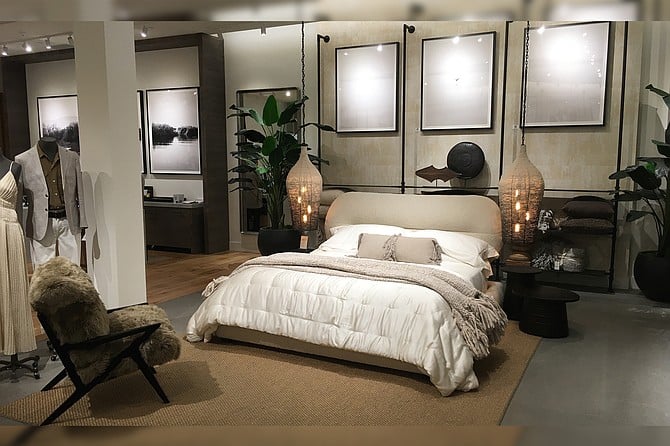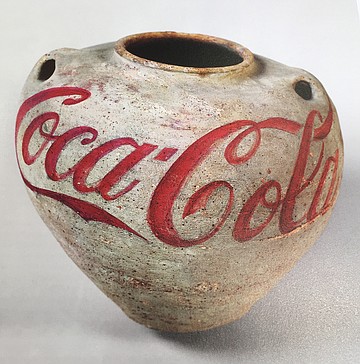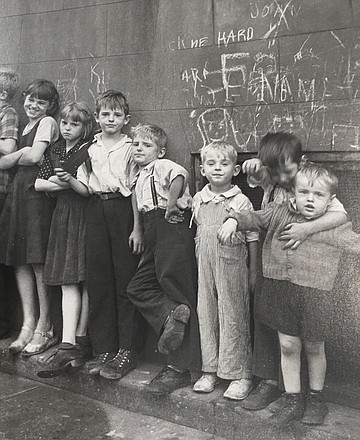 Facebook
Facebook
 X
X
 Instagram
Instagram
 TikTok
TikTok
 Youtube
Youtube

Books do furnish a room
“More Luxury Coming Soon!” promised the poster at Fashion Valley, by way of explaining and apologizing for the mall’s rough-and-tumble construction zone vibe. But inside Banana Republic, it had already arrived — as much as it could arrive in a division of The Gap. “Come Home to the World,” beckoned the window display, and the interior did its best to make the shopper feel that they had stumbled into some intrepid world traveler’s stateside retreat — besides the vintage BMW motorcycle parked on a display table, the space offered a proper bedroom and sitting room, tastefully appointed in wood tones, natural fibers, African artifacts, and purchasable framed black and white photographs of exotic flora and fauna.

Those photos could also be found in an enormous book: Art: Curated by Banana Republic. “Born of a legacy rooted in exploration,” read the opening copy, “inspired by the romance of travel, the wonders of ancient cultures, and the beauty of the natural world, a collection of extraordinary works celebrating the spirit of discovery, crafted by acclaimed artists from around the world, thoughtfully curated in an exclusive collection.” Well now!
I’ve seen elephants and giraffes before, but the book caught my attention, in part because it was just one of a great many books in-store, thoughtfully stacked on low tables set up between numerous couch stations. There are no bookstores in Fashion Valley, but mightn’t you be more likely to pick up Burning Man: Art in the Desert while lounging in the living room of a globetrotting sophisticate?

Sure, the focus in on image; these are coffee-table art books. But such images! The “attractive people doing attractive things in attractive places” in Slim Aarons’ Women. The gorgeous taxonomy of pioneering botanist Anna Atkins (and others) in Phaidon’s Plant: Exploring the Botanical World. The glories of Paris, the thrills of Miami. And among those images, there is still much to learn. Take it from Chinese artist/activist Ai Weiwei in his book on Andy Warhol: “Understand him and you will understand the United States, for he is the most tragically beautiful legend in the history of American art — a unique artist of purely American values.” Or consider the huge posters of suffering faces pasted in public spaces that are captured in Can Art Change the World? Or the moral horror of Jenny Holzer’s Redaction Paintings, based on the harrowing testimony of detainees as recorded in declassified American intelligence documents.

I thought of the late, lamented P.J. O’Rourke and his delight in stumbling upon Emily Post’s book of etiquette as a youngster — bored and casting about, he found himself suddenly fascinated: this collection of good advices taught him that “manners are the small coin of morality.” As for me: lounging on a cream couch, I found myself transported by a collection of Stanley Kubrick’s work as a photographer before he made his way into movies — in particular, his photo-essay on a New York City shoeshine boy. The photo of his subject posing confidently with his many brothers and sisters against an alley wall scrawled with graffiti was a long way from the curated comfort of Fashion Valley, but if I hadn’t come here, I might never have seen it. Funny old world.


Books do furnish a room
“More Luxury Coming Soon!” promised the poster at Fashion Valley, by way of explaining and apologizing for the mall’s rough-and-tumble construction zone vibe. But inside Banana Republic, it had already arrived — as much as it could arrive in a division of The Gap. “Come Home to the World,” beckoned the window display, and the interior did its best to make the shopper feel that they had stumbled into some intrepid world traveler’s stateside retreat — besides the vintage BMW motorcycle parked on a display table, the space offered a proper bedroom and sitting room, tastefully appointed in wood tones, natural fibers, African artifacts, and purchasable framed black and white photographs of exotic flora and fauna.

Those photos could also be found in an enormous book: Art: Curated by Banana Republic. “Born of a legacy rooted in exploration,” read the opening copy, “inspired by the romance of travel, the wonders of ancient cultures, and the beauty of the natural world, a collection of extraordinary works celebrating the spirit of discovery, crafted by acclaimed artists from around the world, thoughtfully curated in an exclusive collection.” Well now!
I’ve seen elephants and giraffes before, but the book caught my attention, in part because it was just one of a great many books in-store, thoughtfully stacked on low tables set up between numerous couch stations. There are no bookstores in Fashion Valley, but mightn’t you be more likely to pick up Burning Man: Art in the Desert while lounging in the living room of a globetrotting sophisticate?

Sure, the focus in on image; these are coffee-table art books. But such images! The “attractive people doing attractive things in attractive places” in Slim Aarons’ Women. The gorgeous taxonomy of pioneering botanist Anna Atkins (and others) in Phaidon’s Plant: Exploring the Botanical World. The glories of Paris, the thrills of Miami. And among those images, there is still much to learn. Take it from Chinese artist/activist Ai Weiwei in his book on Andy Warhol: “Understand him and you will understand the United States, for he is the most tragically beautiful legend in the history of American art — a unique artist of purely American values.” Or consider the huge posters of suffering faces pasted in public spaces that are captured in Can Art Change the World? Or the moral horror of Jenny Holzer’s Redaction Paintings, based on the harrowing testimony of detainees as recorded in declassified American intelligence documents.

I thought of the late, lamented P.J. O’Rourke and his delight in stumbling upon Emily Post’s book of etiquette as a youngster — bored and casting about, he found himself suddenly fascinated: this collection of good advices taught him that “manners are the small coin of morality.” As for me: lounging on a cream couch, I found myself transported by a collection of Stanley Kubrick’s work as a photographer before he made his way into movies — in particular, his photo-essay on a New York City shoeshine boy. The photo of his subject posing confidently with his many brothers and sisters against an alley wall scrawled with graffiti was a long way from the curated comfort of Fashion Valley, but if I hadn’t come here, I might never have seen it. Funny old world.
Comments